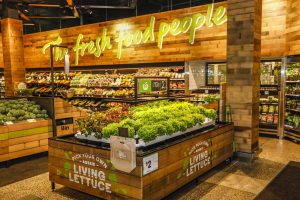When you get the chance to sit in conversation with a consumer goods specialist of 30 years, you take it. This piece draws on some of the insights gained from spending time with Nicholas Simms, CEO of Bubs Australia, a company which has grown exponentially in the last two years.
From sales and marketing to manufacturing; from Mars, Heinz and five:am, Nicholas’ breadth and depth of experience is well-earned and can be hard to come by.
Nicholas drove the expansion of the organic yoghurt and granola brand five:am into the Hong Kong, Philippines, Singapore, Malaysia and the ASEAN market in general. We asked him to share some of the opportunities and challenges he sees for this market and category.
Chilled products easy to ship to Asia
“At five:am we exported to about a dozen countries,” he said. “The product had a shelf life of approximately 42 days. We made it, then shipped it out via air freight the same day to many markets. Our partners would then clear the inventory at the other end, then distribute it to appropriate food stores in each market.”
As long as you have the right platform
Key to five:am’s success was selecting the right grocery outlets. “For us, it wasn’t about being in all stores,” said Nicholas. “It was about being in the right stores and the right retailers. We had targeted selected stores throughout the ASEAN Market, like FairPrice, Jason’s Marketplace, Taste in Hong Kong, Rustan’s in the Philippines.
“People think exporting chilled products is difficult,” said Nicholas. “The reality is we could land a product on shelf, in store, in Southeast Asia; with as much shelf life, as we did in Woolworth’s. Effectively, if inventory was going out of date, it was in the wrong stores.” With this in mind, Nicholas’s standpoint is that Australian manufacturers shouldn’t be deterred from exporting because of it.
Traditional, eCommerce, or hybrid?
In contrast to our domestic market, in many ASEAN markets you can choose your distribution model – and this has many benefits. “Obviously, eCommerce is starting to ramp up quite dramatically. To start to access some of these markets, eCommerce helps to identify consumers, and to market to them online, through data. This can help you cement your business and brand, story and pricing at an appropriate level.” And although five:am uses a more traditional premium grocery model of distribution, for certain categories a hybrid model incorporating eCommerce will capture more customers seeking premium products.
If you’d like to learn more about the possibilities and what’s right for your category and products, or connect with pre-qualified buyers for the methods that you’ve chosen, reach out. We’d love to help you grow internationally.
Opportunities and Challenges: ASEAN Market Explored



